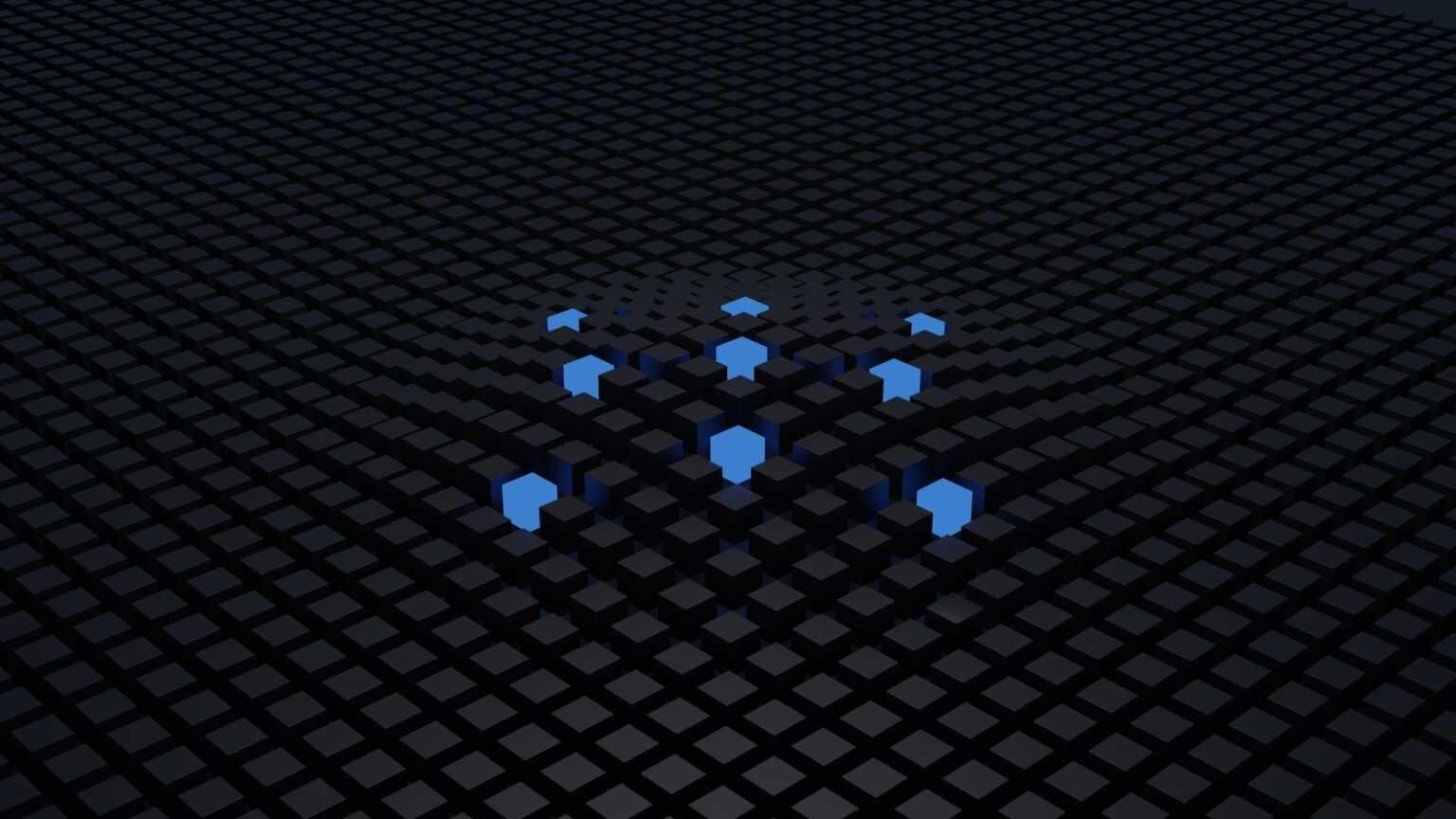Utilize the principles of quantum mechanics to achieve secure exchange of cryptographic material that resists all computational attacks. The physical properties of quantum states, such as superposition and entanglement, enable protocols where any eavesdropping attempt disturbs the system detectably, ensuring absolute confidentiality.
QKD protocols rely on transmitting information encoded in single photons or entangled particles, exploiting fundamental physics to guarantee secrecy. By measuring these quantum carriers, legitimate parties generate shared secret strings immune to interception even by adversaries with unlimited computational power.
Implementing this technology requires precise manipulation and detection of quantum bits over optical channels, combining experimental setups with theoretical models to verify security claims. Such systems represent the forefront of communication protection, enabling future networks with provable immunity against hacking attempts.
Quantum key distribution: unbreakable communication
Implementing secure data exchange protocols grounded in the principles of quantum mechanics offers a fundamentally enhanced protection paradigm. This method leverages the inherent properties of photons and their quantum states to establish encryption credentials immune to conventional interception strategies. By utilizing single-photon transmission and measurement, any eavesdropping attempt inevitably alters the quantum state, revealing intrusion through error rates beyond acceptable thresholds.
At the core of this approach lies a process that enables two parties to generate a shared secret string with provable secrecy based on physical laws rather than computational assumptions. Unlike traditional cryptographic techniques relying on mathematical complexity, this method capitalizes on quantum phenomena such as superposition and entanglement. Consequently, it assures confidentiality even against adversaries equipped with unlimited computational power or future quantum processors.
Technical foundations and experimental validation
The system operates by encoding information onto polarized photons transmitted via optical fibers or free-space channels. Detection devices analyze these quantum states using specific measurement bases chosen randomly by communicating endpoints. The resulting correlated outcomes undergo classical post-processing steps including sifting, error correction, and privacy amplification to distill a uniform secret sequence resistant to partial knowledge leakage.
Experimental setups often employ BB84 or E91 protocols as benchmarks, demonstrating key generation rates ranging from kilobits per second over metropolitan distances up to megabits per second in laboratory conditions with minimized noise levels. Notably, recent advances include integrating decoy states that mitigate photon-number-splitting attacks, enhancing resistance against sophisticated interception techniques documented in several peer-reviewed studies.
The implementation’s security is rigorously proven under assumptions consistent with realistic device imperfections using composable security frameworks. These proofs quantify information leakage bounds based on measured parameters such as quantum bit error rate (QBER) and detector efficiency, guiding practitioners in calibrating system parameters for optimal trustworthiness within operational environments.
Emerging research explores combining this strategy with blockchain architectures to facilitate decentralized trust models where distributed ledger technology records authentication events without exposing sensitive material. Such hybrid constructions promise scalable deployment scenarios enabling verifiable identity management alongside tamper-evident audit trails secured by physics-driven cryptography.
Implementing BB84 Protocol Steps
The initial phase of the BB84 protocol involves preparing and encoding quantum states based on specific bases chosen by the sender. Utilizing two conjugate bases–commonly rectilinear and diagonal polarizations–the sender randomly selects one for each transmitted photon. This deliberate randomness leverages fundamental physics principles, ensuring that any interception attempts induce detectable disturbances. The encoded photons are then dispatched over a quantum channel to the receiver, who independently measures them using randomly selected bases as well.
Following transmission, the participants communicate through a classical channel to compare the bases used without revealing the actual measurement outcomes. By discarding all bits where their bases do not coincide, they obtain a raw shared sequence. This sifting process is critical to maintaining integrity within quantum-based secret sharing frameworks and forms the foundation for subsequent error correction and privacy amplification stages.
Step-by-Step Methodology of BB84 Implementation
- State Preparation: Employ a photon source emitting single photons or weak coherent pulses. Each photon is polarized according to a randomly chosen basis and bit value, adhering strictly to defined polarization states such as horizontal/vertical or diagonal orientations.
- Quantum Transmission: Transmit encoded photons through an optical fiber or free-space link optimized for minimal decoherence and loss, maintaining fidelity essential for secure exchanges.
- Random Measurement Basis Selection: The receiver applies randomly selected measurement bases corresponding to those used by the sender but independent in choice, capturing measurement results accordingly.
- Sifting Process: Through a public authenticated classical channel, participants reveal their basis choices per photon without disclosing measured bits, retaining only matching basis instances for key construction.
- Error Rate Estimation: By comparing subsets of their raw data publicly, they estimate the quantum bit error rate (QBER), which quantifies potential eavesdropping or transmission noise impacting security guarantees.
- Error Correction and Privacy Amplification: After detecting discrepancies beyond acceptable thresholds, advanced coding techniques reconcile differences while privacy amplification algorithms reduce partial information leakage accessible to adversaries.
This framework relies heavily on quantum mechanics’ no-cloning theorem and uncertainty principle to ensure confidentiality during secure string formation. Real-world implementations frequently integrate decoy-state methods to mitigate photon-number-splitting attacks while maintaining robustness against practical imperfections inherent in hardware components.
Empirical studies demonstrate that systems employing this protocol can achieve secret exchange rates sufficient for cryptographic applications under distances exceeding tens of kilometers in fiber optics. Experimental setups balance between maximizing throughput and minimizing error rates by optimizing detector efficiencies, timing synchronization precision, and environmental isolation from external perturbations.
The interplay between theoretical constructs and laboratory experimentation remains pivotal when refining protocols like BB84 within emerging QKD infrastructures. Continuous iterations involving parameter tuning foster improved resilience against evolving attack vectors targeting both physical channels and auxiliary classical communication links integral to secret establishment processes.
Detecting Eavesdropping Attacks
Effective detection of interception attempts relies on monitoring disturbances during the secure exchange of cryptographic material. Protocols based on the fundamental principles of physics enable verification through measurement inconsistencies, revealing any unauthorized observation. For instance, protocols utilizing photon polarization or phase encoding can identify alterations caused by an interloper, since any measurement performed on the quantum states inevitably induces detectable anomalies in transmission statistics.
Security frameworks built upon these physical properties ensure that deviations from expected error rates serve as reliable indicators of intrusion. By analyzing parameters such as the quantum bit error rate (QBER), participants can determine whether the channel remains uncompromised. Experimentally, when QBER surpasses predetermined thresholds–often around 11% depending on protocol specifics–the presence of an adversary is inferred, prompting immediate termination or adjustment of data reconciliation procedures to preserve integrity.
Experimental Approaches and Case Studies
Laboratory investigations have demonstrated that eavesdropping detection is achievable through systematic comparison of subsets of exchanged sequences. In a typical setup, parties publicly disclose randomly selected bits for error estimation without revealing the entire encoded information. Any significant discrepancy between sent and received values signals potential interception. Notably, implementations using entangled photon pairs provide enhanced sensitivity by exploiting correlations destroyed upon external measurement, as shown in recent fiber-optic trials achieving low false-positive rates below 1%.
The integration of these physical-layer security checks with blockchain-based ledger systems further strengthens overall protection by timestamping authentication events and recording anomaly alerts immutably. This synergy enables transparent auditing and real-time response mechanisms to potential breaches. Continuous refinement of detection algorithms, informed by experimental datasets and noise modeling, advances resilience against sophisticated attacks aiming to mimic legitimate communication patterns while extracting secret material covertly.
Integrating QKD with Networks
Implementing QKD into existing network infrastructures requires precise synchronization of quantum signal transmission and classical data channels. The process hinges on the principles of quantum physics, where fragile photon states carry encryption material immune to traditional interception methods. To maintain integrity, fiber-optic cables with ultra-low loss and specialized detectors capable of distinguishing single photons must be deployed alongside conventional network hardware.
Network nodes equipped with quantum transmitters and receivers exchange encoded information that forms an encryption token resistant to computational attacks. This mechanism leverages the no-cloning theorem, ensuring any eavesdropping attempt introduces detectable anomalies. Integrators must consider channel attenuation and environmental noise, as these factors directly affect the fidelity of the transmitted sequence essential for secure linkage establishment.
Technical Challenges and Solutions in Network Integration
The primary obstacle lies in balancing distance limitations caused by photon decoherence against practical deployment needs across metropolitan or wide-area networks. Experimental setups have demonstrated successful key sharing over 100 kilometers using trusted nodes that relay encrypted segments without compromising overall security. Recent advances employ quantum repeaters based on entanglement swapping techniques to extend reach without increasing vulnerability.
A critical step involves multiplexing quantum signals with classical traffic in a shared optical fiber, minimizing infrastructure costs while preserving signal purity. Innovative wavelength division multiplexing schemes isolate quantum channels at specific frequencies to prevent cross-talk. Additionally, real-time error correction algorithms adapt dynamically to fluctuating physical conditions, enhancing robustness against atmospheric or thermal disturbances encountered in free-space or undersea links.
The integration also demands rigorous certification protocols combining cryptographic validation with physical layer monitoring. Automated diagnostic tools continuously measure parameters such as photon detection rates, polarization stability, and timing jitter, feeding into adaptive control systems that optimize performance metrics. These feedback loops resemble experimental trials where iterative adjustments refine operational parameters toward maximal resilience.
Case studies involving financial institutions and government agencies illustrate how embedding this technology within secure communication frameworks elevates resistance against future computational threats posed by emerging processors. By systematically layering quantum-derived tokens atop blockchain consensus mechanisms, it becomes possible to create tamper-resistant transaction ledgers synchronized through authenticated pathways guaranteed by fundamental physical laws rather than algorithmic complexity alone.
Hardware Requirements for QKD
Implementing a system based on the principles of physics that enables secure transmission demands specialized hardware components capable of manipulating and detecting quantum states. At the core, single-photon sources with high purity and indistinguishability are indispensable to generate the fundamental information carriers. Semiconductor quantum dots or heralded spontaneous parametric down-conversion setups are commonly employed to produce these photons, requiring precise temperature control and optical alignment. Without reliably producing these quantum particles, maintaining the integrity and secrecy of exchanged data becomes infeasible.
Detectors used in such setups must demonstrate exceptional sensitivity combined with low dark count rates to accurately register faint signals without introducing excessive noise. Superconducting nanowire single-photon detectors (SNSPDs) have emerged as leading candidates due to their near-unity detection efficiency and sub-nanosecond timing resolution. These devices operate at cryogenic temperatures, presenting engineering challenges but ensuring measurement fidelity critical for preserving the security envelope of the encrypted link.
Key Hardware Components and Their Roles
The architecture relies heavily on modulators capable of encoding information onto quantum carriers by altering polarization, phase, or time-bin attributes with minimal loss or decoherence. Electro-optic modulators (EOMs), especially those based on lithium niobate crystals, enable rapid state preparation synchronized with system clocks operating at GHz frequencies. Maintaining coherence throughout transmission requires stable interferometers and polarization controllers integrated within fiber optic channels or free-space optical paths.
Synchronization modules form another pillar by coordinating timing between communicating nodes, often realized through classical channels employing atomic clocks or GPS references. This alignment ensures that measurements correspond precisely to prepared states, preventing errors that would compromise confidentiality protocols derived from physical laws governing quantum mechanics. Additionally, processing units handling basis reconciliation, error correction, and privacy amplification algorithms necessitate robust computational resources tailored for real-time operation.
A practical example can be seen in metropolitan testbeds where fiber lengths approaching tens of kilometers require compensation for photon loss using ultra-low-noise amplifiers combined with advanced modulation techniques. Experimental results demonstrate that employing SNSPDs alongside stabilized interferometric setups yields bit error rates sufficiently low to guarantee cryptographic security without relying on computational assumptions. This validates the theoretical framework underpinning physics-based encryption methods resistant to any algorithmic attack.
The careful integration of these components into a cohesive platform represents both an engineering challenge and an opportunity for innovation in secure data exchange systems rooted in fundamental physical effects rather than mathematical complexity alone. Continued advancements in photonic integration and cryogenics promise more accessible implementations capable of extending secured links over larger distances while maintaining reliability demanded by critical infrastructure applications.
Conclusion: Practical Integration of QKD Technologies
Deploying protocols based on the principles of quantum physics to secure data transfer has demonstrated measurable advantages in fields requiring maximum confidentiality, such as government networks and financial infrastructures. Experimental implementations have validated that leveraging quantum phenomena for cryptographic resource sharing achieves a level of invulnerability unattainable by classical means, particularly when combined with robust error correction and authentication methods.
Current real-world setups employ photon-based transmission channels over fiber optics or free space, demonstrating resilience against typical interception attempts due to the fundamental laws governing quantum states. These systems illustrate how entanglement and superposition can be harnessed to create fresh random sequences impervious to retrospective decryption, ensuring long-term safety in sensitive exchanges.
Future Directions and Impact on Distributed Ledger Security
- Integration with blockchain: Embedding these advanced cryptographic mechanisms into consensus algorithms could dramatically reduce vulnerabilities associated with key exposure and man-in-the-middle attacks.
- Scaling challenges: Extending reach beyond metropolitan areas requires innovative repeater designs or satellite-enabled nodes that maintain coherence without compromising security assumptions grounded in physical laws.
- Hybrid architectures: Combining classical post-quantum algorithms with photonic-based secret sharing offers layered defense models adaptable to various threat landscapes.
- Standardization efforts: Establishing interoperable protocols aligned with rigorous theoretical proofs will accelerate adoption across industries where trustworthiness is non-negotiable.
A systematic approach toward experimental verification–measuring photon loss rates, error thresholds, and eavesdropping detectability–provides practical benchmarks for iterative improvements. Encouraging hands-on trials within controlled environments fosters deeper understanding of underlying mechanics and exposes subtle implementation nuances often overlooked in purely theoretical treatments.
The path forward invites collaborative exploration between physicists, cryptographers, and blockchain developers to refine these techniques into scalable solutions. Through persistent inquiry guided by empirical data rather than assumptions, the promise of physically guaranteed secrecy embedded within distributed platforms moves closer to widespread reality.








